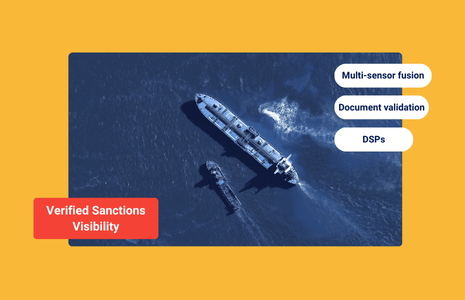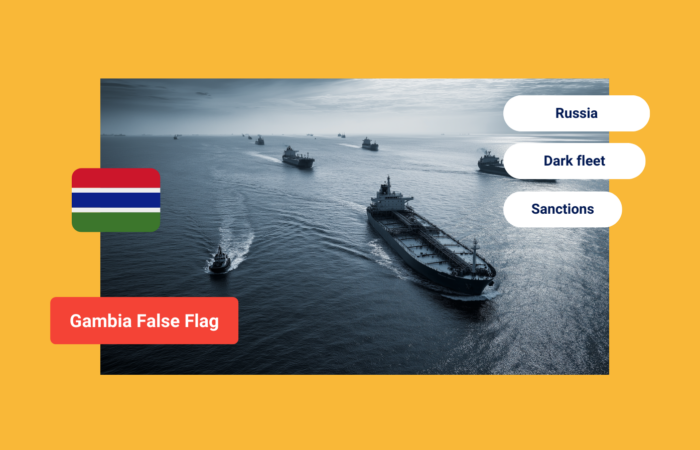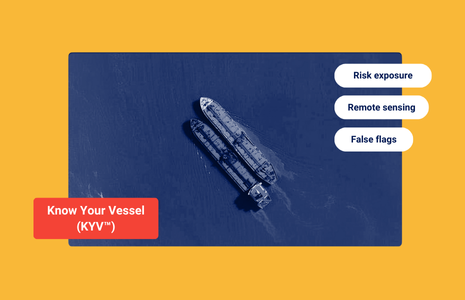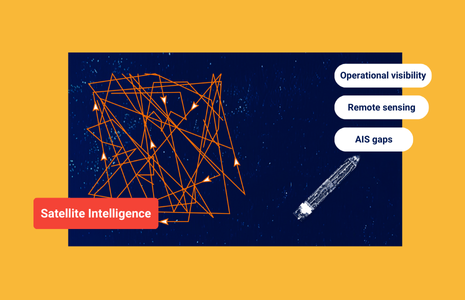10 Red Flags: OFAC Price Cap Guidance, EU’s 8th Sanctions Package
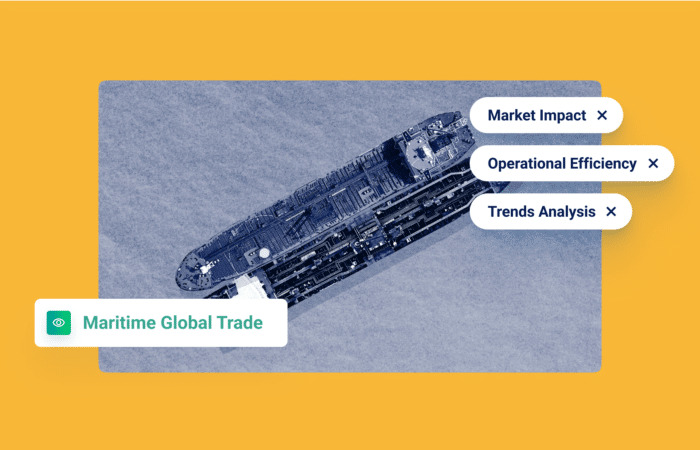
What’s inside?
This article is a collaboration between Wiggin and Dana LLP, a law firm with extensive maritime expertise, and Windward, the leading Maritime AI™ provider.
A price cap and guidance
American and foreign entities throughout the maritime ecosystem are scrambling following the U.S. Department of Treasury, Office of Foreign Assets Control’s (OFAC’s) regulatory announcement. A quick review:
The Group of Seven (G7) nations announced that they would impose a price cap on Russian oil and petroleum products on September 2 2022, to hinder Moscow’s ability to finance war in Ukraine. A week later, OFAC released preliminary guidance shedding light on U.S. plans to implement the price cap. Here’s the plan:
- The U.S. will prohibit a broad range of services related to the maritime transportation of Russian-origin crude oil, effective December 5, 2022.
- The ban will extend to services related to the maritime transportation of Russian-origin petroleum products, effective February 5, 2023.
- The ban will apply to all parties in the supply chain for seaborne Russian oil and petroleum products, including: refiners, importers, commodities brokers, traders, financial institutions providing trade finance, shippers, customs brokers, insurance brokers, hull and machinery insurers, reinsurers, and P&I clubs.
- Services will be exempt if the service provider obtains (and retains!) records demonstrating that the Russian oil or petroleum products were purchased at or below a specified price (price cap), not yet determined.
“The U.S. and its allies have designed the policy in a bid to accomplish two goals: keep Russian oil flowing to global markets while still cutting the revenue Moscow receives from its sales,” according to Andrew Duehren of the Wall Street Journal.
More recently, the EU agreed on its eighth sanctions package, laying the basis for the framework necessary to implement the oil price cap.
Who must comply?
According to the recent guidance, the U.S. prohibitions will apply to direct or indirect sale or supply of services from the United States, or by a United States person, wherever located. Typically, when U.S. sanctions prohibit a U.S. person from performing an activity, they also prohibit U.S. persons from approving, guaranteeing, or in any way facilitating performance of the targeted activities by foreign parties.
Importantly, foreign parties can be held liable for causing U.S. persons to perform or facilitate prohibited activities. As a result, foreign parties will have to comply with the U.S. ban whenever the services have a touchpoint to the United States, including if:
- Related payments will be made in U.S. dollars
- A vessel is U.S. owned or registered
- Services will be provided by parties in the U.S., or by U.S. citizens or green-card holders outside the U.S., or by parties outside the U.S. using U.S.-origin software, or software hosted on U.S. servers, or telecommunications systems in the United States, or if one of a panel of reinsurers is a U.S. company
How will the price cap exemption work?
To benefit from the price cap exemption, service providers must obtain, and retain for at least five years, documentary evidence that the products were purchased at or below the price cap. How much evidence is enough depends on the amount of access to price information the service provider has in the normal course of business. OFAC’s guidance establishes three tiers:
| Level of access to price information in normal course | Type of service provider (examples, not exhaustive) | Acceptable evidence of price |
| Tier 1: Direct access | Refiners, importers, commodities brokers, traders, customs brokers | Invoices, contracts, receipts, proof of accounts payable. |
| Tier 2: Possible access | Financial institutions providing trade finance, shippers | If it is practical to request them: invoices, contracts, receipts, proof of accounts payable. If not, transaction-specific attestation/certification from Tier 1. |
| Tier 3: No access | Insurance brokers, hull and machinery insurers, reinsurers, and P&I clubs | Annual attestation/certification from Tier 1 or Tier 2 (in connection with renewal of policy). |
The preliminary guidance does not refer to other exemptions, although it is possible that further negotiations among the nations will lead to adjustments before the Executive Order announcing the ban is published.
10 compliance risk red flags for maritime actors
OFAC’s early guidance builds upon its deceptive shipping practices advisory issued in May 2020. As with the previous advisory, this new guidance concerns itself with highlighting illicit maritime activities.
Deceptive shipping practices are widespread and often go beyond merely disabling an AIS to “go dark.” Windward’s Maritime AITM platform recently uncovered more than 600 cases of ships manipulating their satellite navigation systems to hide their locations, as featured on the front page of The New York Times. And one of Windward’s blog posts identified patterns of suspicious shipping routes for smuggling oil – the exact behavior that must be monitored, according to the new guidance.
There is a visibility problem in the maritime domain, meaning that even Tier 1 companies don’t always have all the necessary documentation to know the accurate trade price. Automatic identification system (AIS) monitoring, review of past AIS data, and careful scrutiny of all available information for indications of sanctions evasion are essential to protect your business and reputation.
OFAC’s guidance calls out the following ten red flags:
- Reluctance to provide price information
- Requests to make an exception
- Purchase price unrealistically far below the price cap
- Excessively high service costs (may indicate back-end arrangement to pay a higher effective price)
- Opaque payment mechanisms and discrepancies in shipping documents regarding cargo type, voyage numbers, weights or quantities, serial numbers, shipment dates, etc.
- Parties that are newly-formed
- Automatic identification system (AIS) red flags:
- Abnormal shipping routes, or transshipment points compared to past practice
- Lack of historic AIS data for a particular tanker, or fleet of tankers
- Transshipment through one or more jurisdictions for no apparent economic reason
- Sudden unexplained changes in route
- Periods of unexplained dark activity
- Evidence of AIS manipulation
- Patterns consistent with unexplained ship-to-ship (STS) transfers
- Evidence of physical alteration of vessel identification
- Flag hopping
- Complex ownership, or management structures
OFAC’s guidance also identifies the following recommended risk-based measures:
| Type of service provider | Mitigation measures (in addition to red flag review and AIS monitoring/analysis) | |
| Tier 1: Direct access | Refiners, importers, commodities brokers, traders, customs brokers | – Update contracts and invoices to include itemized price for oil (excluding shipping, freight, and customs costs) |
| Tier 2: Possible access | Financial institutions providing trade finance, shippers | – Train trade finance personnel/relationship managers – Update RFI and sanctions questionnaire templates – Update bill of lading to include attestation |
| Tier 3: No access | Insurance brokers, hull and machinery insurers, reinsurers, and P&I clubs | – Train relevant personnel – Update terms and conditions of policies – Include attestation/certification in renewal documents |
What about the EU?
The price cap is a G7 commitment, so the EU will also implement the measure. The EU’s eighth package of Russia sanctions, approved by the Council of the European Union on October 6, 2022, creates the legal basis for EU implementation of the price cap. As explained by the European Commission, the package “marks the beginning of the implementation within the EU of the G7 agreement on Russian oil exports. While the EU’s ban on importing Russian seaborne crude oil fully remains, the price cap, once implemented, would allow European operators to undertake and support the transport of Russian oil to third countries, provided its price remains under a pre-set ‘cap’…This measure is being closely coordinated with G7 partners. It would take effect after 5 December 2022 for crude and 5 February 2023 for refined petroleum products, after a further decision by the Council.”
Windward can help
The time to act is now, as the price cap’s deadlines are rapidly approaching.
Windward has been monitoring the effects of the Russia/Ukraine conflict on the maritime ecosystem since the beginning. Back in April 2022, just two months after the conflict began, the Windward platform was updated with a new Russia sanctions program that helped users quickly recognize sanctioned Russian vessels and companies.
Now, with the new price cap and 8th package updates, Windward is ensuring users have practical ways to protect their business and reputation, even before the new sanctions and bans hit, by automatically flagging:
- Tankers calling port in Russia
- Tankers calling port in Russia and then sailing to the U.S./UK/EU
- Tankers conducting dark activities or STS operations within the mid-Atlantic
- polygon
- Tankers that engaged in a ship-to-ship (STS) meetings with tankers previously calling port in Russia
- Tankers that engaged in STS operations with a sanctioned Russian vessel
Windward is already providing AI-driven insights on vessel behaviors that will help comply with the updated OFAC advisory::
- Abnormal shipping routes – can be detected by using Windward’s indicators for uneconomic behaviors, first-time visits, course deviations, and suspicious STS occurring in areas not known for such operations. These are all immediately and automatically flagged by Windward’s system.
- Ownership irregularities – Windward’s counterparty due diligence database is powered by Dun & Bradstreet and LexisNexis Risk Solutions, and can help with the “newly formed companies or intermediaries” mentioned in the guidance. The solution includes all seven levels of vessel ownership and in the vessel risk profile, Windward provides risk indicators for any recent ownership changes, irregular business structures, and multiple ownership changes.
Need help or advice on complying with OFAC’s early guidance and the overall price cap ban? We are happy to schedule a meeting to better understand your needs.
Get help complying with OFAC’s early guidance and the overall price cap ban
Trending
- The EU’s 18th Sanctions Package Lookback Started. Trading Russian Products? You're At Risk. Nov 24, 2025
- Tanker Freight Rates Hit Five-Year High Amid Russian Oil Sanctions Shake-Out Nov 6, 2025
- Sanctioned, Stateless, and Still Sailing: Expert Insights from the Frontlines of Maritime Sanctions Nov 3, 2025









